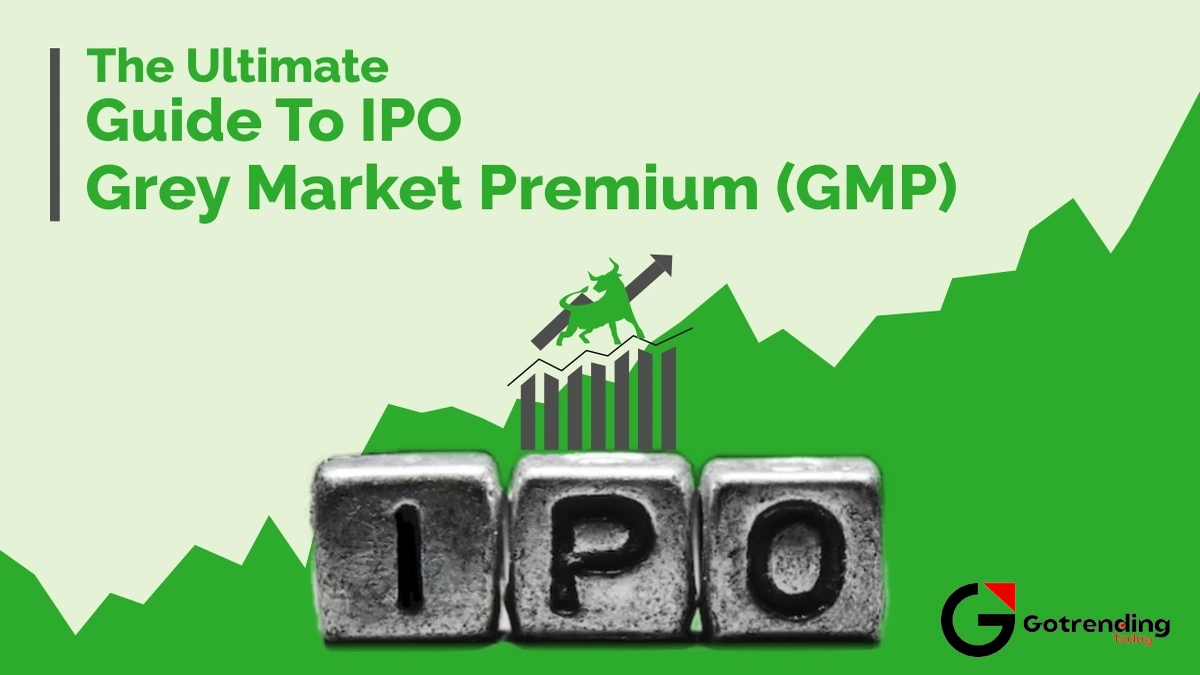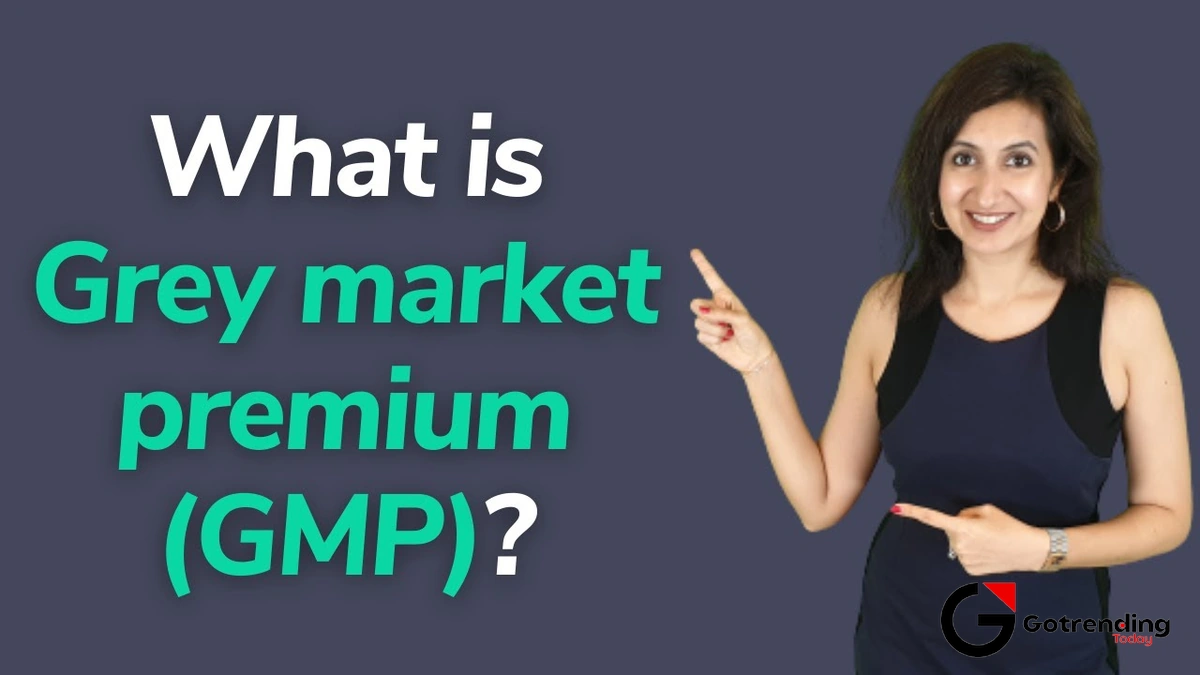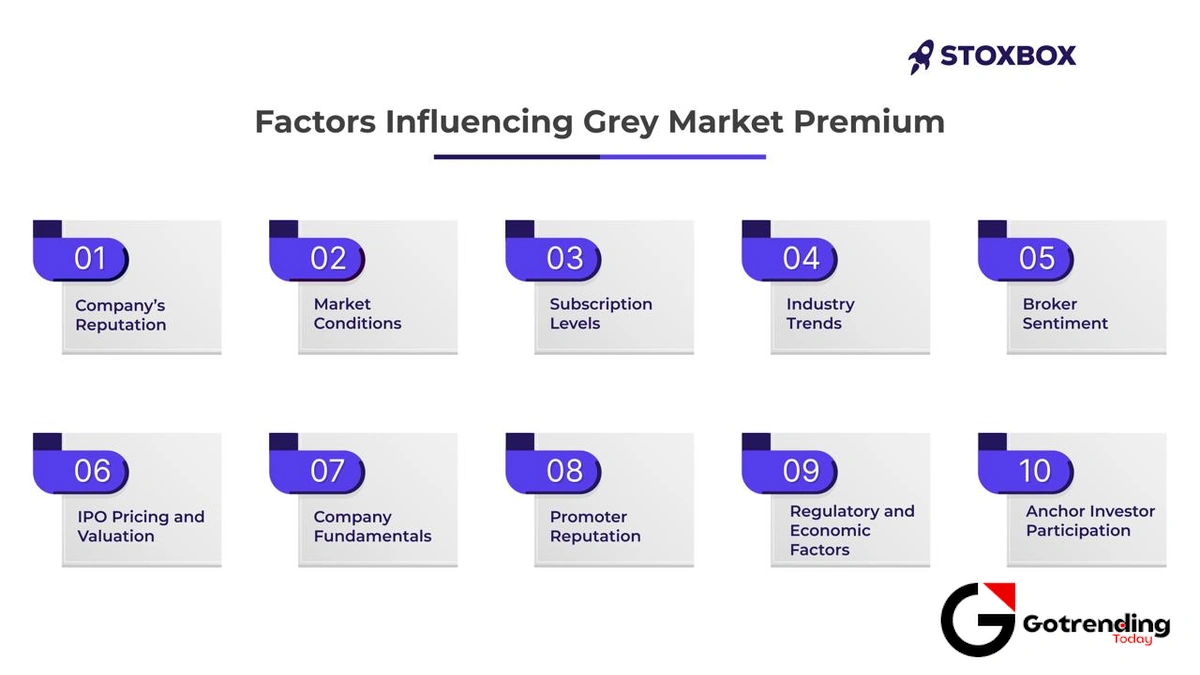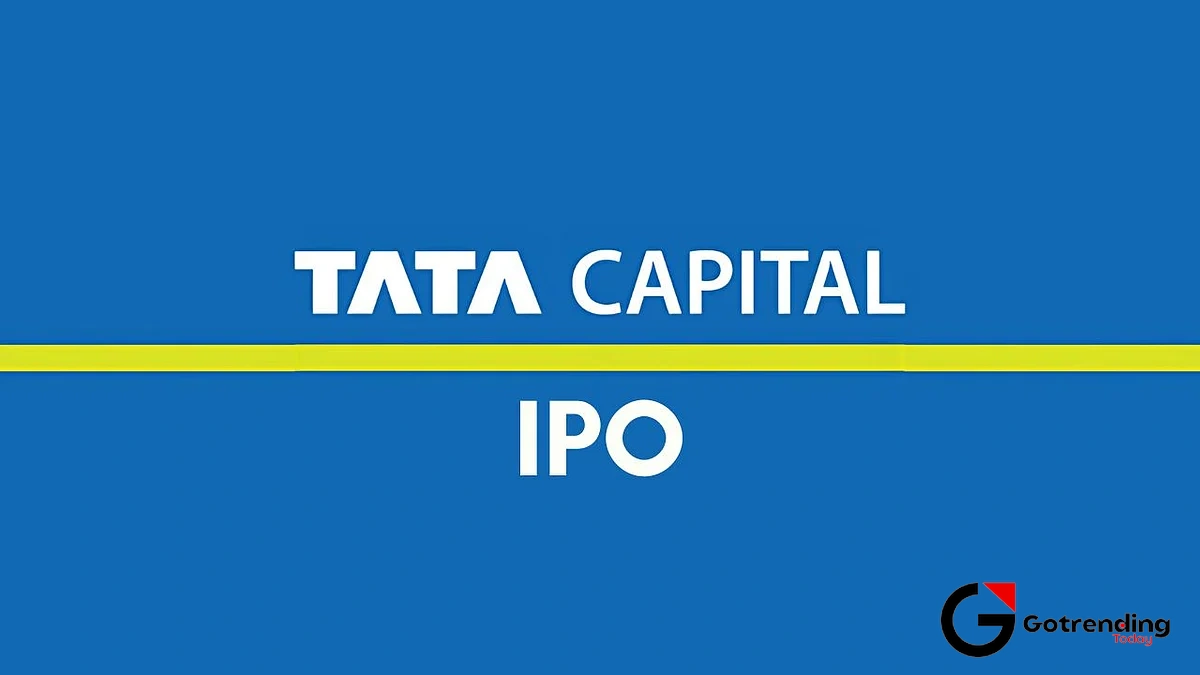Grey Market Premium (GMP) | The Secret IPO Signal Every Indian Investor Needs to Understand
Picture this. We’re sitting in a coffee shop, the buzz of conversation all around us. You lean forward, phone in hand, and show me a screenshot from a WhatsApp group. “Dude, look at this. The GMP for this new IPO is ₹150! That’s like, a 50% gain on day one, right? Should I put all my savings into it?”
I take a sip of my coffee and smile. It’s the question of the hour, the siren song of the Indian stock market for anyone looking to make a quick buck from an IPO.
And my answer? Hold your horses.
That tantalizing number, the grey market premium , is one of the most misunderstood concepts in the investing world. It’s part gossip, part speculation, and part a surprisingly useful indicator if you know how to read it. But treating it as a sure-shot profit forecast is like betting your entire salary on a weather prediction for next month.
So, let’s pull back the curtain. What is this mysterious “grey market”? Where do these numbers come from? And most importantly, how can you, a smart investor, use this information without getting burned? Let’s break it down, analyst to friend.
What Exactly is the Grey Market Premium (And Why Isn’t It, You Know, Regulated?)

Let’s be clear from the start: the grey market is not an official stock exchange. It has no building, no SEBI oversight, and no formal rules. Think of it more like an exclusive, unofficial club of brokers and high-net-worth individuals.
Here’s the simplest analogy: It’s like the market for concert tickets before they officially go on sale to the public. Promoters might release a few tickets to insiders or fan clubs to gauge interest. The price at which those tickets change hands gives an early clue about the demand for the concert. That’s the grey market in a nutshell.
In the IPO world, a company announces its Initial Public Offering (IPO) with a price band say, ₹280 – ₹300 per share. You apply for the shares, but you have to wait for the allotment and then for the official listing day to trade them on the NSE or BSE.
But some people don’t want to wait.
The grey market is where these IPO shares (or even just the applications for them) are bought and sold before they are listed. It’s an over-the-counter, trust-based system. The grey market premium (GMP) is simply the extra amount an investor is willing to pay, over and above the IPO price, to get their hands on those shares early.
So, if the IPO price is ₹300 and the GMP is ₹150, it means someone is willing to buy that unlisted share for ₹450 (₹300 + ₹150) in the unofficial market.
Why is it “grey”? Because it’s not illegal (like a “black” market), but it’s completely unregulated. All transactions are based on trust and cash. If a deal goes south, you can’t exactly file a complaint withSEBI. You’re on your own.
The Million-Rupee Question | How is GMP Actually Calculated?

This is where most people get tripped up. They imagine a complex algorithm or a secret panel of experts setting the GMP meaning . The reality is far simpler and, honestly, a bit more chaotic.
The grey market premium is not calculated; it’s discovered.
It’s pure, unadulterated supply and demand. A small network of dealers and brokers in cities like Mumbai, Ahmedabad, and Kolkata are constantly in touch. They gauge the demand for an upcoming IPO from their high-net-worth clients.
- If a lot of people are desperate to buy the shares of a hot tech startup before it lists, the demand is high, and the GMP shoots up.
- If it’s a boring, old-school manufacturing company with so-so financials, the demand might be low, and the GMP could be zero or even negative.
You’ll often hear two terms thrown around in these circles:
- Kostak Rate: This is a fascinating one. This is the price someone will pay for your *entire IPO application* itself, before the allotment is even announced. Let’s say the Kostak rate is ₹2,000. You can “sell” your application to a grey market operator for that price. If you get the allotment, they keep the shares (and the potential profit or loss). If you don’t get the allotment, you still get to keep the ₹2,000. It’s a way of locking in a small, guaranteed profit.
- Subject to Sauda (or Conditional GMP): This is the deal for the shares themselves. You agree to sell your allotted shares at a certain premium. The deal, however, is conditional—it only goes through *if* you get the allotment. This is the most common basis for the IPO GMP you see quoted online.
The key takeaway? GMP is a sentiment indicator. It reflects the buzz, the hype, and the speculative interest among a specific group of investors. It’s the market’s whisper, not its official announcement.
GMP as a Crystal Ball | Using it Wisely (and What NOT to Do)

Okay, so it’s an unofficial, speculative number. Should you just ignore it? Not necessarily. While it’s not a crystal ball, the GMP can be a useful tool in your analytical toolkit if you use it correctly.
What fascinates me is how it can act as a real-time demand-o-meter before the official subscription data is even fully available.
What You SHOULD Do with GMP |
- Use it as a Sentiment Gauge: A consistently high and rising GMP signals strong initial interest. It tells you that the “smart money” (or at least, the fast money) expects a positive listing. It’s a data point to consider alongside your own research.
- Check the Trend: Don’t just look at the GMP on one day. Is it increasing as the listing day approaches? That’s a positive sign. Is it collapsing? That’s a major red flag, suggesting the initial hype is fading.
- Compare it with Subscription Figures: Once the IPO bidding closes, compare the final subscription numbers with the GMP. If an IPO is oversubscribed 100x and has a strong GMP, it confirms widespread demand.
What You MUST NOT Do |
- Never Treat it as a Guarantee: This is the golden rule. I’ve seen GMPs of over 50% evaporate completely by listing day because of a sudden change in market sentiment or a negative news event. The grey market is fickle.
- Don’t Make it Your Only Reason to Apply: Investing in a company with weak fundamentals just because of a high grey market premium is a recipe for disaster. The hype might get you a listing pop, but you could be left holding a dud for the long term. Remember, after the IPO pop, it’s just a company like any other, and its performance will depend on its business, not on pre-listing hype. Just look at the journey of established companies like the IEX share price; their value is built over years, not in a single day’s listing.
- Ignore the Company’s Fundamentals: This is the biggest mistake. The GMP tells you nothing about the company’s debt, its profitability, its management quality, or its future growth prospects.
Beyond the Hype | What Really Matters in an IPO
So, if GMP is just one piece of the puzzle, what are the other, more important pieces? If you genuinely want to make an informed decision, you need to do a little homework. It’s not as hard as it sounds.
- Read the DRHP (Draft Red Herring Prospectus): I know, it’s a huge, boring document. But the first 20-30 pages usually contain a summary. Look for these:
- About the Company: What do they actually do? Do you understand their business?
- Objects of the Offer: Why are they raising money? Is it to pay off debt (a potential red flag) or to expand their business (a good sign)?
- Financials: Are their revenues and profits growing consistently over the last 3 years?
- Risks: The company is legally required to list all potential risks. Read them!
- Check the Valuation: Is the IPO priced reasonably? Compare its P/E ratio with other listed companies in the same sector. Is it significantly more expensive than established players like, for instance, in the jewellery space, a giant like Titan? If so, why?
- Look at the Anchor Investors: The list of anchor investors (large institutions that invest before the IPO opens to the public) is a good sign of quality. If marquee names like major mutual funds or foreign investors are on the list, it builds confidence.
This is the real analysis. The stuff that separates guessing from investing.
Frequently Asked Questions (The Stuff Everyone’s Thinking)
Is trading in the grey market legal?
It exists in a legal grey area. It’s not explicitly illegal, but it is completely unregulated and unofficial. There is no legal recourse if a deal goes wrong, and all transactions happen outside the purview of SEBI and the stock exchanges.
What are ‘Kostak rates’ again?
The Kostak rate is the fixed price you get for selling your entire IPO application, regardless of whether you receive an allotment of shares or not. It’s a way to lock in a very small, risk-free profit.
Does a high GMP guarantee listing gains?
Absolutely not. It’s a strong indicator of positive sentiment, but it is not a guarantee. Market conditions can change rapidly, and the GMP can vanish by the time the stock lists.
Where can I find reliable GMP information?
Several financial news websites and portals track grey market IPO data. However, remember that these are all unofficial sources gathering information from dealers. It’s best to look at a few different sources to get an average view rather than relying on a single number.
What does a negative GMP mean?
A negative GMP, also called a “discount,” means the shares are trading in the grey market for less than the issue price. For example, a GMP of -₹20 on a ₹300 IPO means people expect it to list around ₹280. It’s a strong signal of low demand and a potential weak listing.
So, back to our coffee shop. The next time you see a sky-high GMP, you’ll know what to do.
You’ll acknowledge the buzz. You’ll use it as a signal to dig deeper. But you won’t let it be the only thing that drives your decision. The grey market premium is the whisper of the crowd, a hint of what might be. But true investing wisdom comes from listening to that whisper, and then calmly opening the company’s report to find out the real story. That’s how you play the long game.













